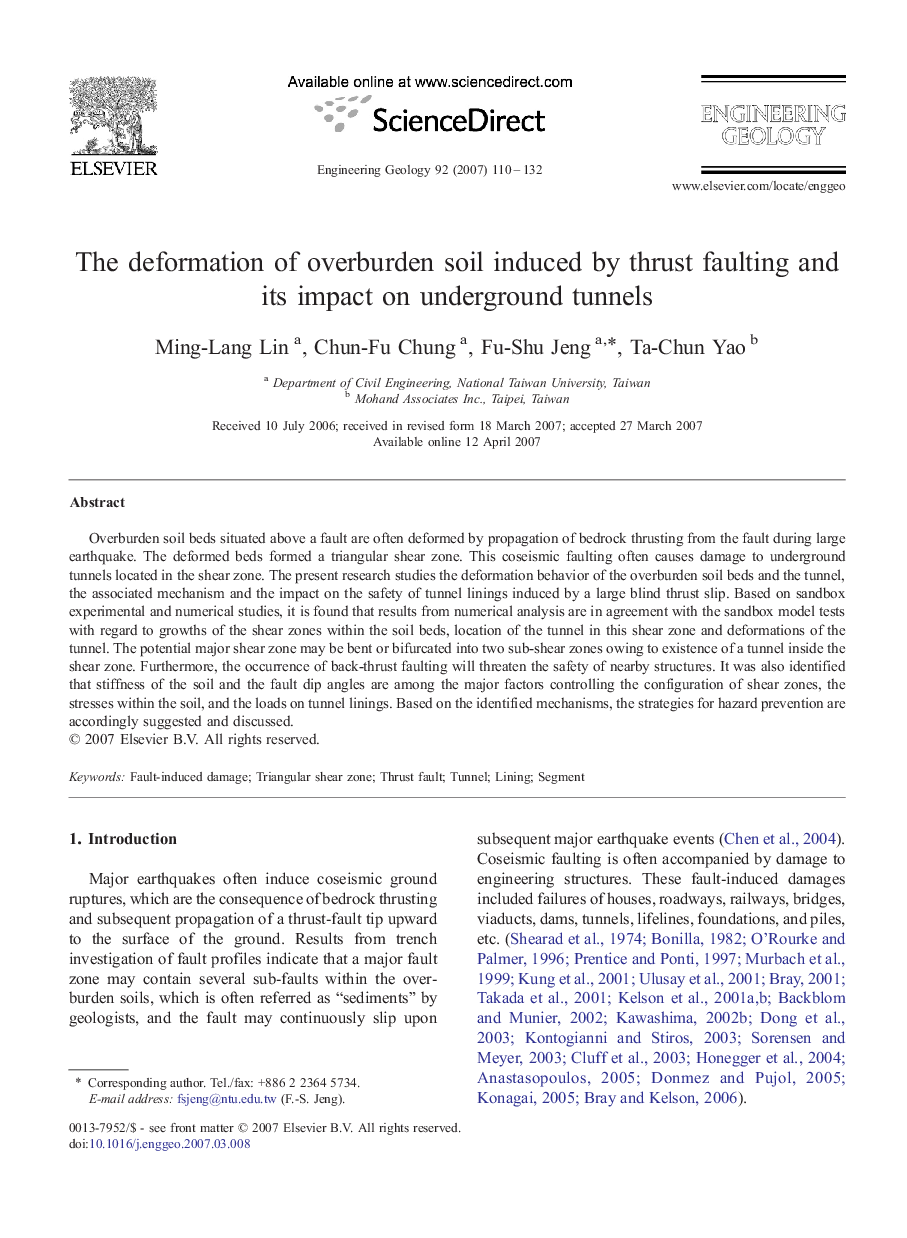| Article ID | Journal | Published Year | Pages | File Type |
|---|---|---|---|---|
| 4744631 | Engineering Geology | 2007 | 23 Pages |
Overburden soil beds situated above a fault are often deformed by propagation of bedrock thrusting from the fault during large earthquake. The deformed beds formed a triangular shear zone. This coseismic faulting often causes damage to underground tunnels located in the shear zone. The present research studies the deformation behavior of the overburden soil beds and the tunnel, the associated mechanism and the impact on the safety of tunnel linings induced by a large blind thrust slip. Based on sandbox experimental and numerical studies, it is found that results from numerical analysis are in agreement with the sandbox model tests with regard to growths of the shear zones within the soil beds, location of the tunnel in this shear zone and deformations of the tunnel. The potential major shear zone may be bent or bifurcated into two sub-shear zones owing to existence of a tunnel inside the shear zone. Furthermore, the occurrence of back-thrust faulting will threaten the safety of nearby structures. It was also identified that stiffness of the soil and the fault dip angles are among the major factors controlling the configuration of shear zones, the stresses within the soil, and the loads on tunnel linings. Based on the identified mechanisms, the strategies for hazard prevention are accordingly suggested and discussed.
